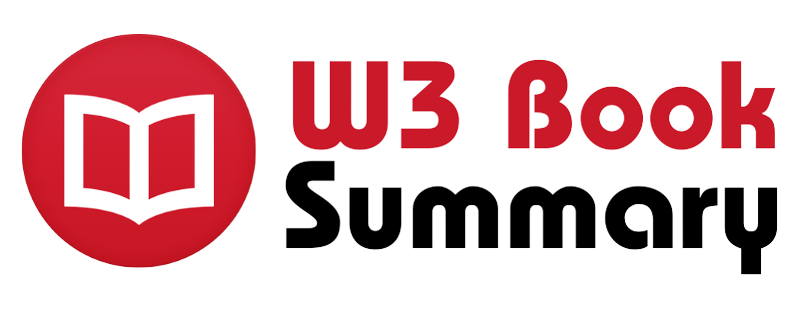The Checklist Manifesto by Atul Gawande is a book about the power of checklists to reduce errors and improve outcomes in complex tasks. Gawande, a surgeon and writer, argues that checklists are a simple but effective way to catch mistakes and ensure that all of the necessary steps are taken in a complex procedure.
The book in three sentences:
- The
Checklist Manifesto is a book about the power of checklists to reduce
errors and improve outcomes in complex tasks.
- Gawande,
a surgeon and writer, argues that checklists are a simple but effective
way to catch mistakes and ensure that all of the necessary steps are taken
in a complex procedure.
- Checklists have been shown to be effective in a wide variety of industries, including healthcare, aviation, and construction.
The power of checklists
Gawande begins by recounting the story of a pilot who forgot to lower
the landing gear on his plane, resulting in a crash that killed all 116 people
on board. Gawande then explains how checklists are used in aviation to prevent
accidents like this from happening.
Checklists are also used in other high-risk industries, such as
construction and nuclear power. Gawande argues that checklists can be just as effective
in reducing errors in other fields, such as healthcare and business.
Why checklists work
Gawande identifies several reasons why checklists work. First,
checklists help to overcome human error. Even the most skilled professionals
can make mistakes, especially when they are tired or stressed. Checklists
provide a simple way to catch mistakes before they have serious consequences.
Second, checklists help to ensure that all of the necessary steps are
taken in a complex procedure. This is especially important in tasks that are
unfamiliar or involve multiple people. Checklists can help to prevent important
steps from being overlooked.
Third, checklists can help to improve communication and teamwork. When
everyone is following a checklist, it is easier to coordinate efforts and
ensure that everyone is on the same page. This can be especially important in
complex tasks that involve multiple people with different roles.
Checklists in healthcare
Gawande then turns to the use of checklists in healthcare. He recounts
the story of how he accidentally made an incision in the wrong place during a
surgery. This near-miss experience led Gawande to develop a surgical safety
checklist.
Gawande's checklist was implemented at a hospital in Michigan, and it
resulted in a dramatic reduction in surgical errors. The checklist has now been
adopted by hospitals around the world, and it is credited with saving thousands
of lives.
Checklists in other industries
Gawande also discusses the use of checklists in other industries, such
as business and construction. He shows how checklists can be used to improve
outcomes in a wide variety of tasks, from building a skyscraper to launching a
new product.
The five key principles of checklists
Gawande identifies five key principles of effective checklists:
1. Simplicity: Checklists should be simple and easy to use. They should be clear and
concise, with minimal jargon.
2. Collaboration: Checklists should be developed and used in collaboration with all
stakeholders. This helps to ensure that the checklist is complete and accurate.
3. Customization: Checklists should be customized to the specific task or procedure at
hand. This helps to ensure that the checklist is relevant and useful.
4. Implementation: Checklists should be implemented in a way that is easy and convenient
for users to follow. This helps to ensure that the checklist is actually used.
5. Monitoring: Checklists should be monitored and updated regularly to ensure that
they are effective and up-to-date.
Examples of successful checklists
Gawande provides several examples of successful checklists in use today:
- The World Health Organization Surgical Safety Checklist: This checklist is used by surgeons around the world to reduce
errors and improve patient safety.
- The airline industry checklist:
Airlines use checklists to ensure that all of the necessary safety checks
are performed before a plane takes off or lands.
- The construction industry checklist:
Construction companies use checklists to ensure that all of the necessary
safety precautions are taken and that all of the work is completed
correctly.
How to create and use checklists
Gawande provides some tips for creating and using effective checklists:
- Start by identifying the key steps in the task or procedure. What are the most important things that need to be done to avoid
errors and achieve a successful outcome?
- Write the checklist in clear and concise language. Avoid using jargon or technical terms that people may not
understand.
- Pilot test the checklist with the people who will be using it. This will help to ensure that the checklist is easy to use and
that it covers all of the necessary steps.
- Implement the checklist in a way that is easy and convenient for
users to follow. This may involve making the checklist
available in electronic format or posting it in a prominent location.
- Monitor the checklist and update it regularly. This will help to ensure that the checklist is effective and up-to-date.
Conclusion
The Checklist Manifesto is a powerful book that makes a compelling case
for reducing errors and improving outcomes in complex tasks. He encourages
people to adopt checklists in their own work and lives.
Gawande argues that checklists are a simple but effective way to
catch mistakes and ensure that all of the necessary steps are taken in a
complex procedure. He provides examples of how checklists have been used to
improve outcomes in a wide variety of industries, including healthcare,
aviation, and construction. Gawande also provides tips for creating and using
effective checklists.
Gawande encourages people to adopt checklists in their own work and lives. He argues that checklists can help us to all be better at what we do.






0 Comments